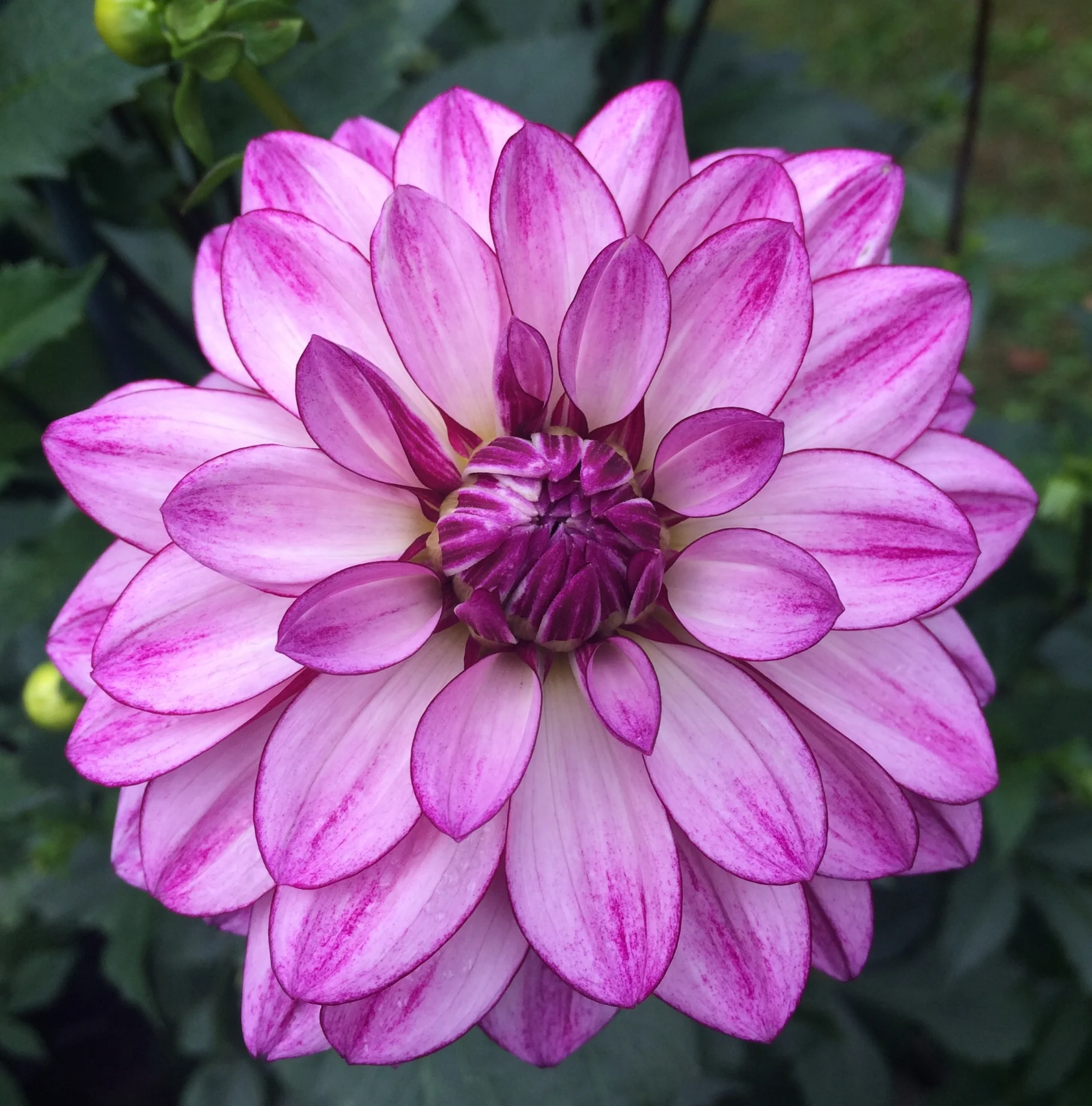Dahlia Classifications
Dahlias are classified by color, form, and size. The American Dahlia Society publishes designations of these standards, and their official glossary and classification lists are reproduced below.
Glossary of Terms
BLEND — Two or more evenly merging harmonious or pleasingly contrasting colors.
CENTRAL RAYS — The short or immature ray florets comprising the central portion of the fully double flowers when at their prime stage.
DISC — A more or less flat, circular group of tubular florets fully visible in open-centered type dahlias.
DISC FLORETS — Small tubular florets which make up the central part of the flower head, each with a pistil and stamens but generally no other conspicuous flower parts.
DWARF — Dahlia varieties that normally do not produce plant growth over 24 inches in height.
FLORET — One of the small flowers that collectively comprise the flower head.
FULLY DOUBLE — Flower heads with multiple rows of ray florets; the disc florets are immature and completely covered by the central rays when a bloom is at the prime stage.
INCURVED — The ray florets curve forward along their length toward the face of the flower head.
INVOLUTE — Margins of the ray florets roll forward along their longitudinal axis (length). When fully involute the margins touch or overlap so only the reverse of the floret is visible.
LACINIATED — The ray florets are split; there should be a twisting in the area of the split involute or revolute ray florets, to give an overall fringed effect.
MARGIN — The edge of the ray floret, sometimes marked with a narrow contrasting color
MARGINAL RAYS — Fully developed ray florets that establish and determine the maximum diameter of a bloom; mature florets rather than immature central ray florets.
PETAL — The common name for the conspicuously colored part of a ray floret.
PETALOIDS — Additional floral parts on ray florets having the form and appearance of smaller petals. Most noticeable in the collarette dahlias.
RAY FLORET — One of the broad, conspicuously colored florets, the structure of which suggests a single petal of an ordinary bloom. These form the radiating border in the open-centered type dahlias, or massed together, the flower head in fully double types.
RECURVED — The ray florets curve backward along their length toward the stem.
REFLEXED — A straight ray floret from the tip to the base that extends and drops toward the stem.
REVOLUTE — Margins of the ray florets roll backward along their longitudinal axis. When fully revolute, the margins touch or overlap.
STRAIGHT — The ray florets have little or no curvature throughout their length.
Dahlia Colors
The following chart lists the official colors assigned to dahlias by the American Dahlia Society. You can find the detailed descriptions HERE.
Dahlia Forms
The American Dahlia Society classifies the form/shape of dahlias according to the following table. The details may be found HERE.
Dahlia Sizes
The abbreviations for the standard sizes of dahlias are listed in the following table.
Classification Tables
The following table lists varieties arranged by size, color and type based on the abbreviations listed in the previous section.
